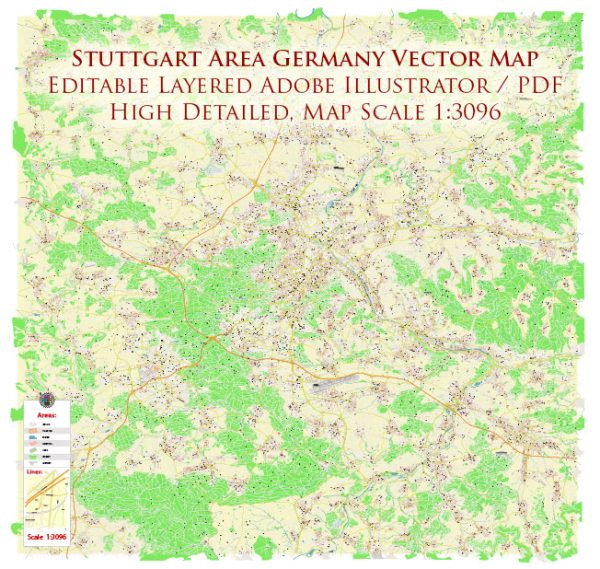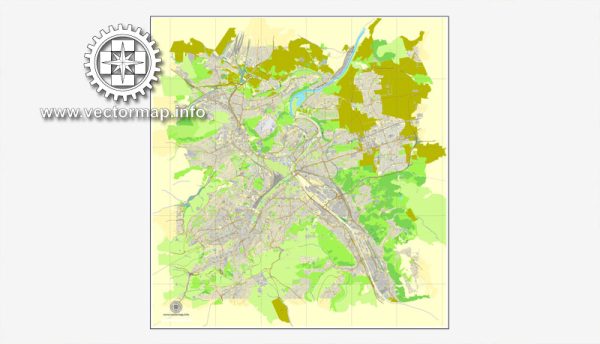Stuttgart, the capital and largest city of the state of Baden-Württemberg in Germany, is not known for its extensive waterways, as it is situated in a valley surrounded by hills and vineyards. However, there are some notable features in terms of waterways, bridges, and main streets within the city:
Waterways:
- Neckar River: While not directly within the city, the Neckar River is a significant waterway in the region. It flows to the north of Stuttgart and plays a role in the transportation and trade in the area.
Bridges:
- Wilhelma Bridge (Wilhelma Brücke): This bridge spans the Neckar River and connects the Wilhelma Zoo and Botanical Garden on one side to the Rosenstein Park on the other. It provides a scenic view of the river and surrounding areas.
- Theodor-Heuss-Brücke: This bridge is another important river crossing in Stuttgart, connecting the districts of Feuerbach and Bad Cannstatt. It is a key transportation link for both pedestrians and vehicles.
Main Streets:
- Königstraße: As one of Stuttgart’s main shopping streets, Königstraße is a bustling pedestrian zone with a wide range of shops, restaurants, and cultural attractions.
- Theodor-Heuss-Straße: This street is known for its vibrant nightlife, with numerous bars, clubs, and entertainment options. It intersects with Königstraße and runs through the city center.
- Neckarstraße: Following the course of the Neckar River, this street offers picturesque views and is a pleasant route for walking or cycling along the waterfront.
It’s important to note that Stuttgart’s layout is influenced by its topography, with the city nestled in a valley, and as such, the waterways and bridges are not as prominent as in some other cities. The city is better known for its cultural attractions, automotive industry, and green spaces.
Vectormap.Net provide you with the most accurate and up-to-date vector maps in Adobe Illustrator, PDF and other formats, designed for editing and printing. Please read the vector map descriptions carefully.



 Author: Kirill Shrayber, Ph.D.
Author: Kirill Shrayber, Ph.D.